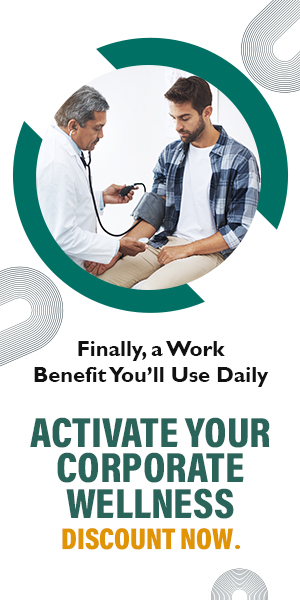Movement
6 Reasons to Stretch Post-Workout
Skipping post-workout stretches can slow your fitness progress, increase risk of injury and leave you sore. Cooling down with a stretch routine is a must to take your fitness to the next level.

Have you been skipping stretching after exercise? After a good workout, it may be tempting to hit the couch thinking that you have already done enough movement for the day. And if you’re doing exactly that, it is hampering your progress in the gym. This is because no workout is complete without stretching.
A proper cool down is necessary and this includes different types of stretching. If you haven’t been stretching after a workout you will be experiencing body stiffness and soreness. It can also increase the risk of injury.
We spoke to UR.Life Fitness Manager & Trainer Mr. Ismail, who shared why stretching is important post-workout. He also shared his knowledge on how to weed out the issues that occur while not stretching. He mentions that to yield the best results, you have to add post-workout stretches into your routine. The benefits of stretching post-workout extends far beyond just addressing the challenges. Here is why:
Need all your wellness solutions in one place? A whole new world awaits just a click away.
6 Reasons to Stretch After Exercise
Decrease Risk of Injury
During exercise, muscles contract and shorten to generate force and movement. This process can lead to muscle tightness, particularly in muscles that have been heavily engaged. Tight muscles are more susceptible to injury because they are less flexible and more prone to sudden overextension or tearing.
Stretching after exercise helps to counteract this tightness by elongating the muscle fibres back to their natural resting length. When you stretch, the muscle spindles (sensory receptors within the muscle) are stimulated, causing a reflex relaxation. This relaxation reduces muscle tension and promotes a more balanced muscle state. Also, regular stretching increases muscle elasticity. Muscle elasticity enables muscles to stretch and return to their original shape and length. Enhanced elasticity means muscles can better absorb the impact of physical activity and are less likely to become strained or injured during subsequent exercise session
Related story: 3 Stretches For People Who Have A Desk Job
Increase Blood Flow to Muscles
According to a 2018 study by the Journal of Physiology, stretching can help improve your circulation. Improved circulation increases blood flow to your muscles and can help them heal more quickly after a workout.
Enhanced blood flow means more oxygen and nutrients are delivered to the muscles, which is crucial for their function and recovery. During exercise, muscles consume oxygen and nutrients to produce energy (ATP) for contraction. After exercise, stretching increases blood circulation, helping to replenish these essential nutrients and support muscle repair and growth.
Moreover, physical activity generates metabolic waste products, such as lactic acid. Enhanced blood flow helps flush out these waste products more efficiently, reducing muscle soreness and fatigue post-exercise. This promotes quicker recovery and prepares the muscles for the next workout. Improved circulation also aids in temperature regulation within the muscles. This helps dissipate the heat generated during exercise and prevents muscle stiffness or cramps. This ensures better overall muscle health and performance.
Related story: The World's Greatest Stretch: Why Everyone Should Do it Everyday
Enhance Flexibility and Range of Motion
When you stretch a muscle, especially after exercise when it's warm, the muscle fibres lengthen. This process helps to maintain or increase the muscle's elasticity and flexibility. Over time, regular stretching can lead to greater muscle length, allowing for a wider range of motion around joints.
Stretching also stimulates receptors in the muscles called muscle spindles and Golgi tendon organs. These receptors relay information to the nervous system about the muscle's length and tension. This leads to improved muscle coordination and balance, as the nervous system can more effectively manage muscle contractions and relaxations. Over time, stimulating these receptors also helps to prevent injuries by ensuring that muscles and tendons are not overstretched.
Related story: Five Stretches To Ease Headache Instantly
Promote Recovery
Another significant benefit of post-exercise stretching is the gradual slowing of your heart rate. After intense physical activity, the heart rate is elevated, and it is important to gradually bring it back to resting levels to avoid dizziness or fainting. Engaging in gentle stretching allows the cardiovascular system to gradually slow down. This helps the heart rate to decrease in a controlled manner. The gradual decline is more effective and safer than abruptly stopping the exercise, which can cause blood to pool in the extremities and lead to lightheadedness.
In addition to helping normalise heart rate, stretching also promotes overall muscle relaxation, which is essential for recovery. When muscles are stretched after a workout, they begin to cool down and release any built-up tension. This relaxation process helps to prevent the muscles from becoming stiff and sore, which can impede movement and flexibility in the days following the exercise.
Related story: Recovery 101: What to do Post-Workout
Release Muscle Tension
Muscle tension can accumulate during intense physical activity. When muscles are subjected to strenuous exercise, they contract and generate tension as part of the body's natural response to physical stress. This tension can lead to feelings of tightness and discomfort if not properly addressed. Stretching after a workout helps to elongate the muscles and release this built-up tension. Gently stretching the muscle fibres can help the muscles return to their resting length, promoting relaxation.
However, when muscle tension is not released, it can lead to various negative consequences. Persistent muscle tightness can reduce flexibility and range of motion, making everyday movements challenging. Unreleased muscle tension can contribute to the development of muscle imbalances, poor posture, and chronic pain conditions, such as tension headaches or lower back pain.
Better Posture
According to a 2015 study published by the Journal of Physical Therapy Science, combining a strength training routine with stretching exercises can help ease back and shoulder pain. It may also encourage proper alignment, which may help improve your posture.
When you sit or stand incorrectly, you often end up putting extra pressure and strain on your muscles. This, in turn, can lead to back pain and other types of musculoskeletal pain. Incorporating stretching into your post-workout routine ensures that your muscles return to their proper length and alignment, which ultimately contributes to better overall posture.
Related story: 7 Minutes Stretch Routine To Feel Good After Work
4 Post-Workout Stretches to Try
Hamstring Stretch
Step 1: Sit on the floor with one leg extended straight in front of you.
Step 2: Bend the opposite leg, bringing the sole of your foot to your inner thigh.
Step 3: Reach forward towards your toes of the extended leg, keeping your back straight.
Step 4: Hold the position for 20-30 seconds, then switch legs.
Related story: Workplace Stretches That Every Tech-Worker Must Do
Quadriceps Stretch
Step 1:Stand up straight and use a wall or chair for balance if needed.
Step 2:Bend one knee, bringing your heel towards your buttocks.
Step 3:Grab your ankle with the same side hand, pulling gently to increase the stretch.
Step 4:Hold the stretch for 20-30 seconds, then switch legs.
Related story: 5-Hip Stretches For Every Desk-Workers
Chest Stretch
Step 1: Stand tall and clasp your hands behind your back.
Step 2: Straighten your arms and gently lift them towards the ceiling.
Step 3: Open your chest and hold the position for 20-30 seconds.
Step 4: Release and repeat twice.
Child’s Pose
Step 1: Kneel on the floor with your big toes touching and knees spread apart.
Step 2: Sit back on your heels and extend your arms forward, lowering your chest towards the floor.
Step 3: Rest your forehead on the ground and relax into the stretch.
Step 4: Hold the position for 30-60 seconds, breathing deeply throughout.
Need all your wellness solutions in one place? A whole new world awaits just a click away.
When you’re looking to take your exercise regime to the next level, head to UR.Life Studio. We are the premier destination for fitness in Hyderabad, offering customised fitness plans and more for your needs. Our team of celebrity trainers, certified nutritionists and experienced physiotherapists are here to help you unlock your full potential.
Our two locations in Jubilee and Kavuri Hills in Hyderabad offer a swimming pool, gym, spa, rehabilitation centre and cafe to ensure you reach your health objectives. Our gym offers classes in aerobics, CrossFit, Zumba, and more. Come try our world-class gym and experience the difference for yourself.
EXPLORE MORE
Instead of chasing long workouts, micro-movement shifts the focus from “Did I work out today?” to “Did I move often enough today?”
Pressed for time but craving results? These high-impact exercises burn maximum calories in minimum time, when done right.
Simple, practical fitness advice to help you feel stronger, healthier, and more consistent in 2026.
Callisthenics isn’t about flashy Instagram moves or avoiding the gym. According to celebrity fitness and lifestyle coach Krishna Sadvale, it’s one of the most practical ways to build strength, control, and confidence in your own body.






.jpg)

.jpg)
.jpg)
